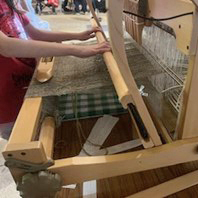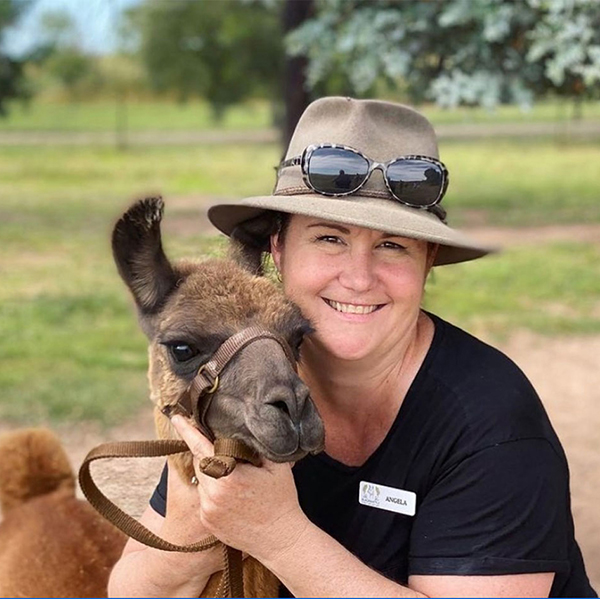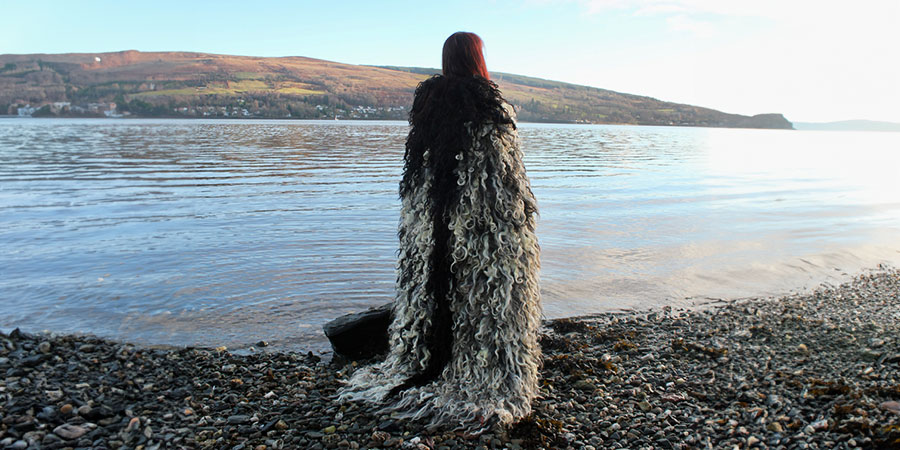
Threads of History: An Icelandic Varafeldur in the South Highlands
A wonderful article that takes you on a journey that includes wild weaving, vikings, history and challenges shared by Sarah Rosenthal-Almirall of Ardbeag Crafts.
Written by Sarah’s daughter-in-law Alicia Anne Adams
Nestled in front of my loom in my lochside cottage, I can’t help but pull elements of my magnificent surroundings into my craft. The fleeces I use are all supplied by small Scottish farmers, hand sorted, spun and washed, then left to dry in my garden. Their mottled whites and greys, browns and beiges reflect the wintry landscapes of the Gare Loch as I weave them into chunky rugs and textured shawls.
It’s not just the area’s natural splendour that strikes me, but the history as well. Scotland is full of tales of Viking raids, and the South Highlands are no different. Loch Long, on the other side of the Rosneath Peninsula, reaches deep into the Arrochar Alps, providing familiar fjord-like landscapes and easy access to settlements for Norwegian raiders in 1263. Famously, the invaders pulled their boats out of the water at Arrochar and carried them by land across the isthmus to Loch Lomond.
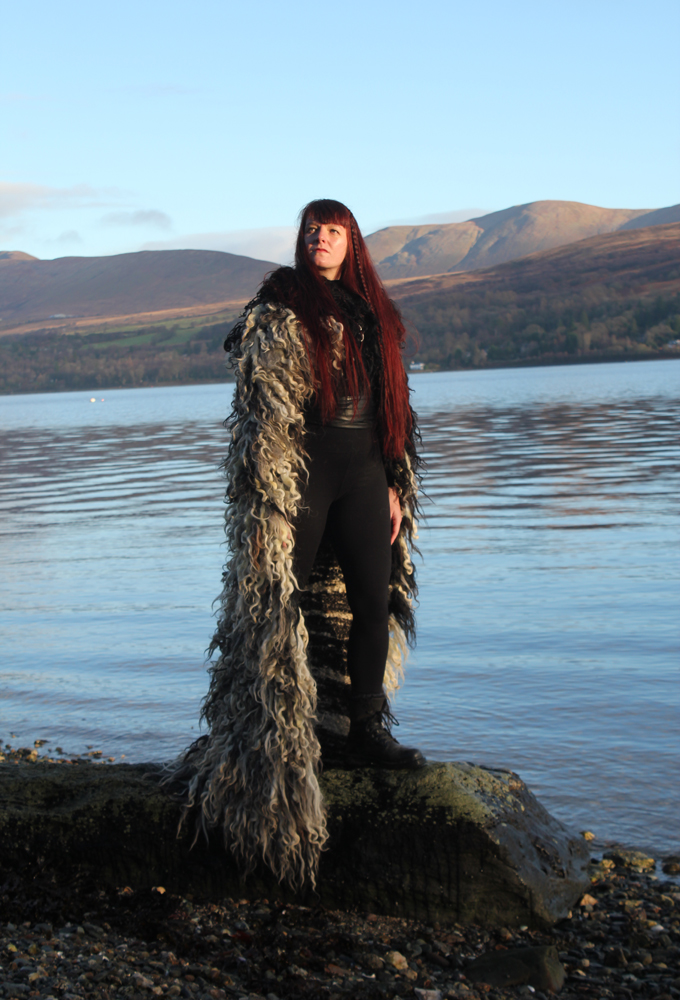
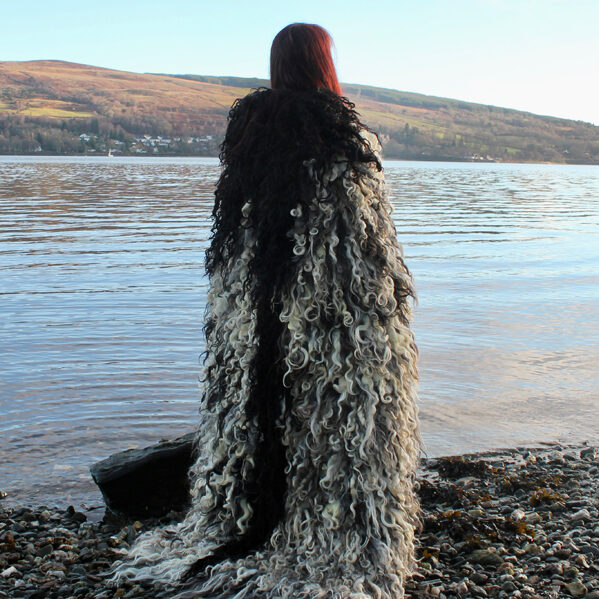
Bearing this story in mind, I found myself drawn to a project that would honour the rich history of the Vikings. This came to fruition in the form of a traditional woven garment known as the varafeldur, which I created as a gift to my Viking-scholar daughter-in-law. Little did I realise when I set out to weave this imposing shaggy cloak what a journey it would lead me on!
A Cloak Fit For a King
A varafeldur, literally translating as “trade cloak” is a heavy, rugged cloak woven from loose locks of wool, giving it an impressive wild and voluminous look. Used by seafaring Vikings, they provided serious insulation in high winds as well as natural waterproofing due to the lanolin left in the locks. No doubt they would also have added to the imposing image of a Viking raider, adding bear-like breadth to the shoulders and a look of the rugged North.
Such cloaks are mentioned in the 13th Century Icelandic law text Grágás, or “The Grey Goose Laws”, which gives specific regulations for how they ought to be made, including appropriate dimensions. This strict ordnance sheds some light on the name “trade cloak”, suggesting that a standard-sized varafeldur was used as a ready unit of trade.
The varafeldur’s much earlier migration from its native Iceland to Norway is described in the saga of the 9th Century King Harald Gráfeldar, which further emphasises the importance of the shaggy cloaks as trade goods. The saga explains how Icelandic traders came to Norway to trade their fleeces and skins, but had little luck. One canny trader made a gift of a varafeldur to King Harald – and upon seeing the King wrapped in the great grey cloak, all of his followers decided they needed to buy one for themselves. Harald went on to establish a bloody rule by land and sea, but throughout his deeds he was known by the name Gráfeldar or “Grey-cloak” in reference to his trademark varafeldur.
The popularity of the varafeldur certainly expanded beyond Iceland and Norway, with remnants of the woven and knotted cloth having been found in Sweden, Russia, Scotland and the Isle of Man. Of particular interest are the fragments found in graves at Birka, Sweden, which are attached to fine cloak pins alongside high-status weapons and jewellery, suggesting that as well as being a practical item these cloaks would have been worn as symbols of rank.
Weaving the Weird
Having consulted the Icelandic Grey Goose laws as to the appropriate length and width of a varafeldur, I estimated that mine would require four fleeces. Traditionally the cloaks are made from hardy Icelandic wool, though other breeds of northern European short-tailed sheep have since been used. I wanted my choice of materials to tell a story in itself, so I set about sourcing fleeces that chronicled the journey of the Vikings from Iceland and Scandinavia through the Scottish Isles to the West Coast of Scotland. I used white Icelandic wool, black Gotland wool, grey Shetland wool, and a grey fleece from The Isle of Colonsay.
I separated each fleece into longer outer locks to be used for the shaggy texture, and denser wool from nearer the sheep’s skin for spinning the weft and warp from. I spun the weft and warp threads using my Ashford e-Spinner Super Jumbo and wove the varafeldur in two long pieces using my 28” Ashford Knitter’s Loom. This would traditionally have been done using a warp-weighted loom, but using the smaller knitter’s loom allowed me the flexibility to work on this complex project in increments. I knotted the locks onto the warp as I wove, following the traditional method outlined by Icelandic and Norwegian weavers who have studied original fragments.
The final stage of the process added a little something of the sagas into my project. I left the lanolin in the wool so that the cloak would be waterproof, but it still needed washing. Historical accounts describe washing these garments in clear mountain streams, and being lucky enough to have a maze of burns on my doorstep, I endeavoured to carry the finished varafeldur up into the hills with help from my husband, and wash it in a pool. This was cold work in December, and the wet cloak nearly doubled in weight for the long walk home. However, the trial turned my mind once again to the journey of those Vikings pulling their heavy boats across the isthmus to Loch Lomond.
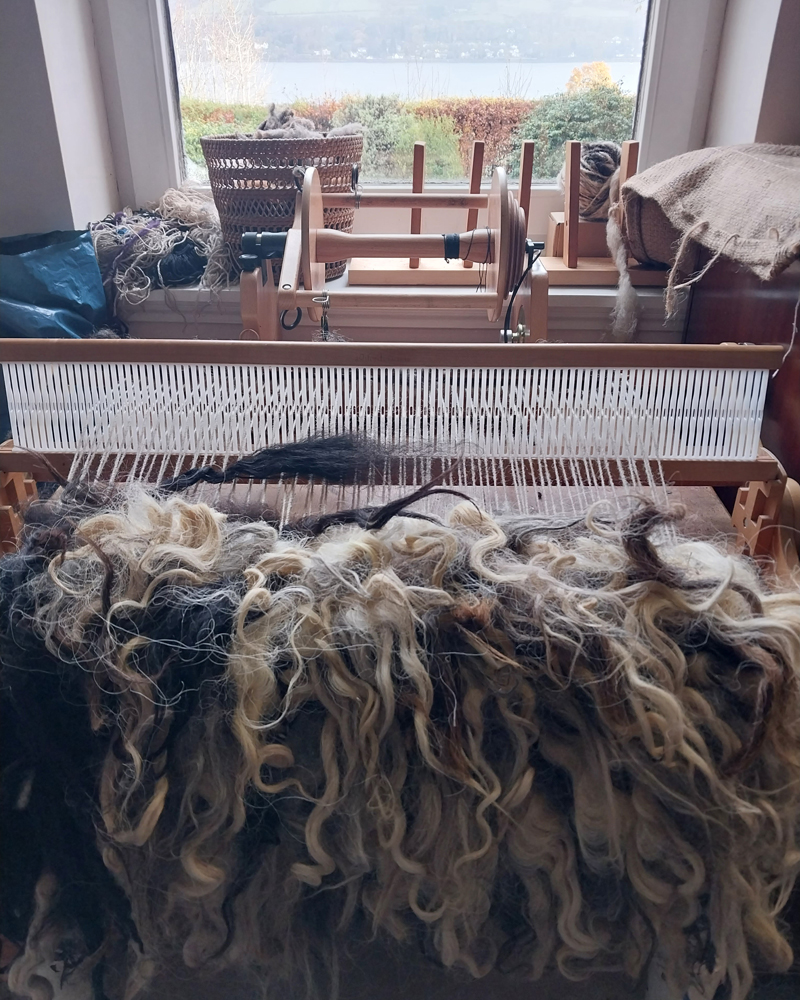
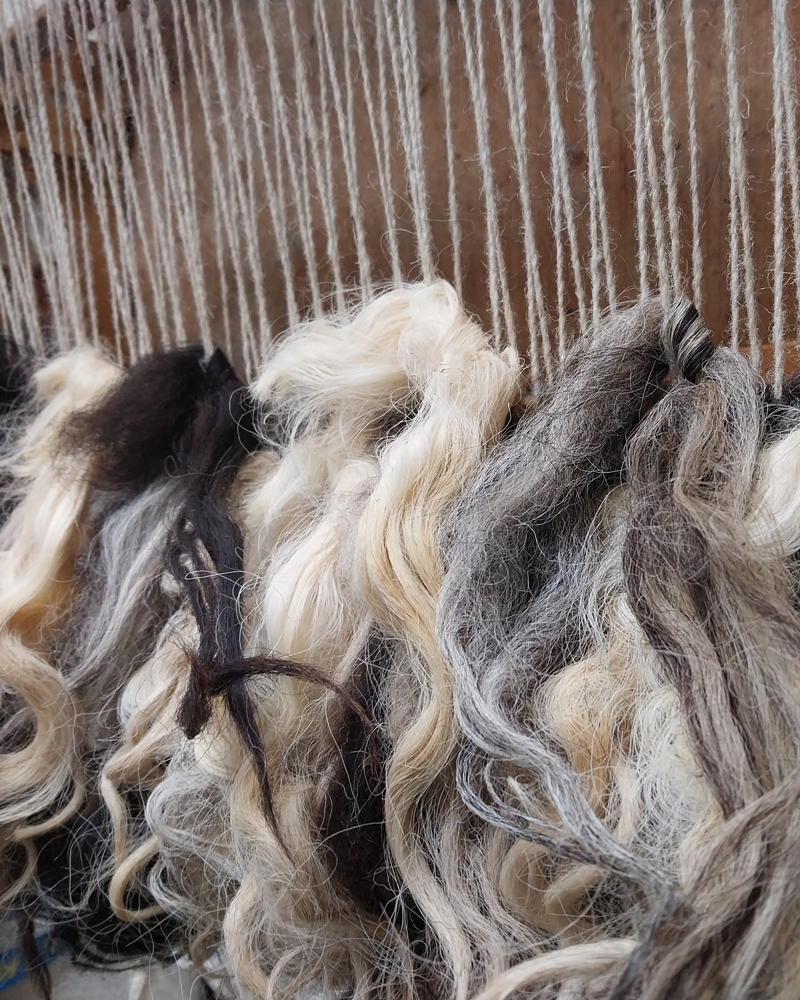
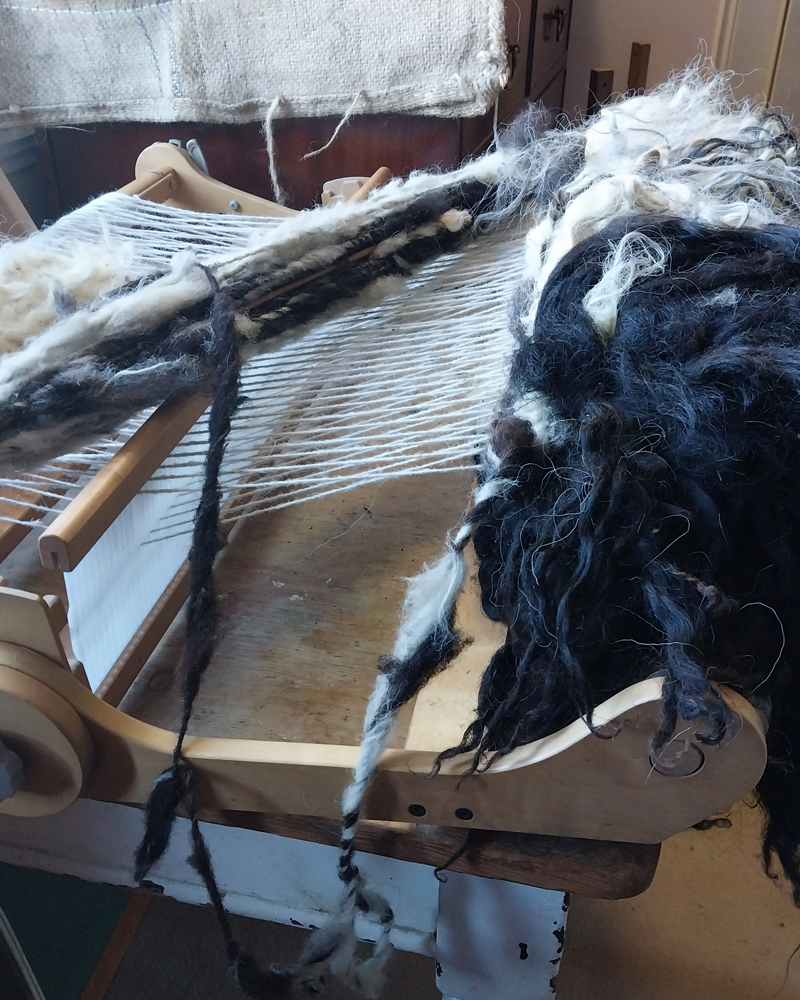
Lessons Learned
The process of weaving a varafeldur is nothing short of a labour of love. The weaving and knotting alone took two hours per inch of cloth. Adding in time for hand spinning, warping the loom and washing the finished cloak brings the total work time to around 250 hours. While corners can be cut – for example using a bath rather than the more romantic mountain stream – but all in all, this is not a project for the faint-hearted.
Despite the labour intensity, the methodical weaving and knotting process over many weeks left me plenty of time to think about 9th Century weavers in Iceland, and how their experience as crafters would have differed to my own. Looking out across the loch from my loom on a cold winter’s day with the greys and whites of sky and sea reflected in my fleeces, I gained an appreciation of the sort of inhospitable environments that these cloaks were created to withstand, and a deep respect for the fanciful-looking garment’s raw practicality.
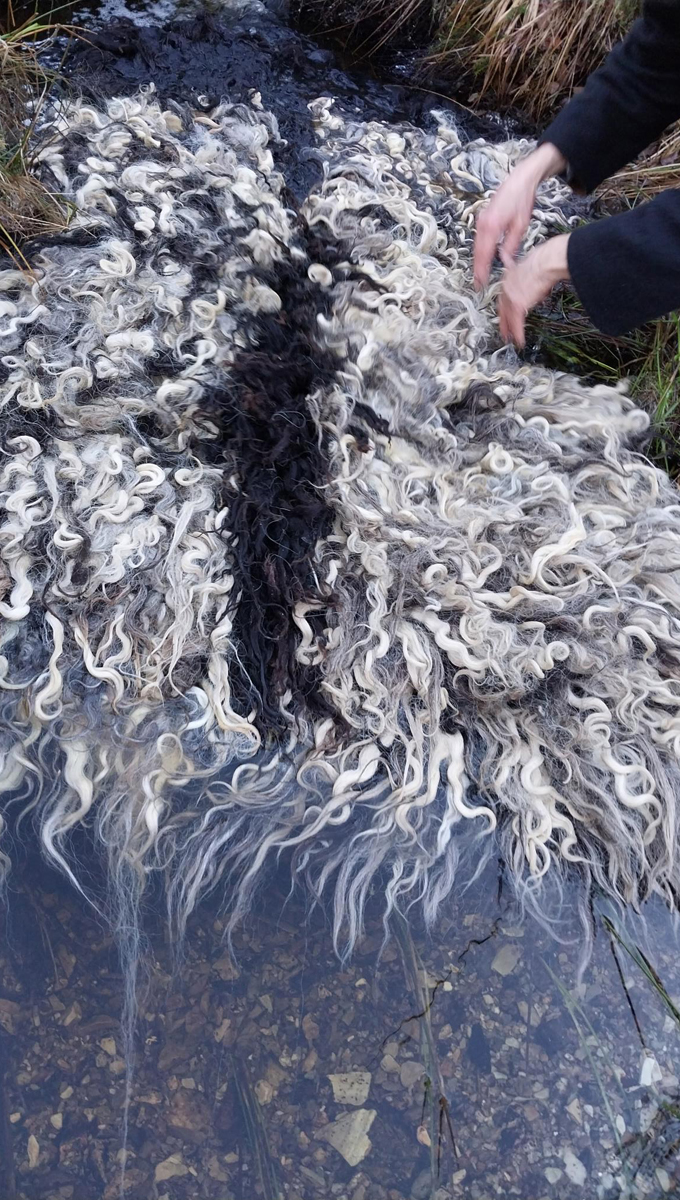
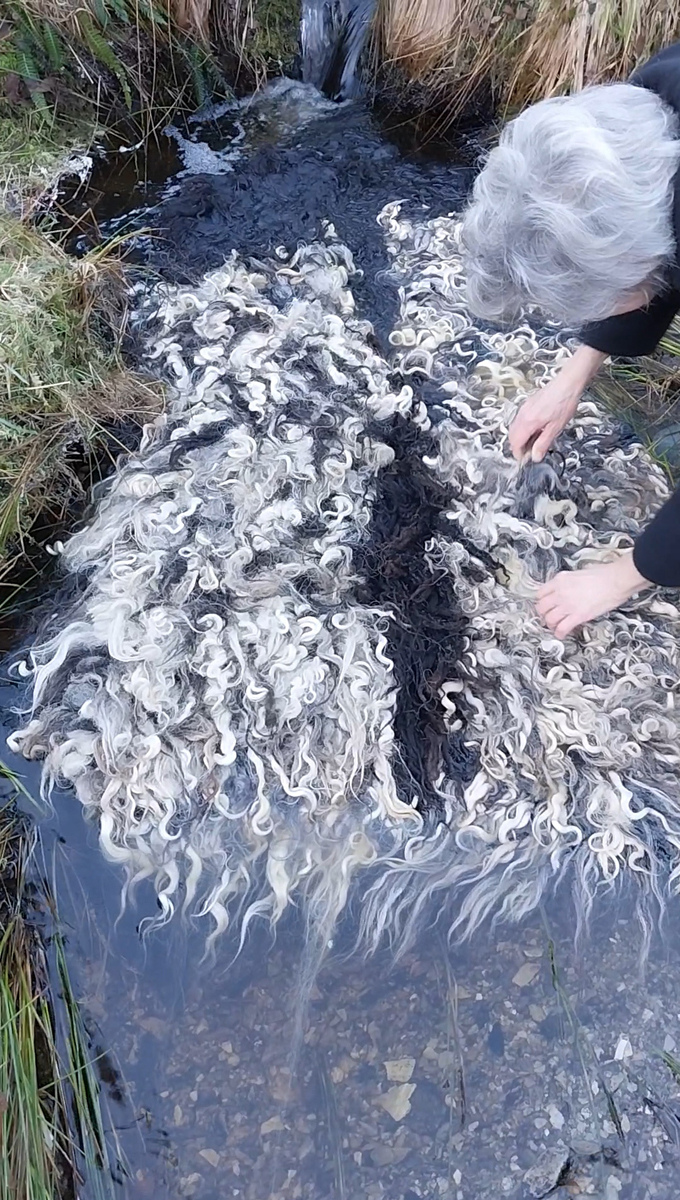
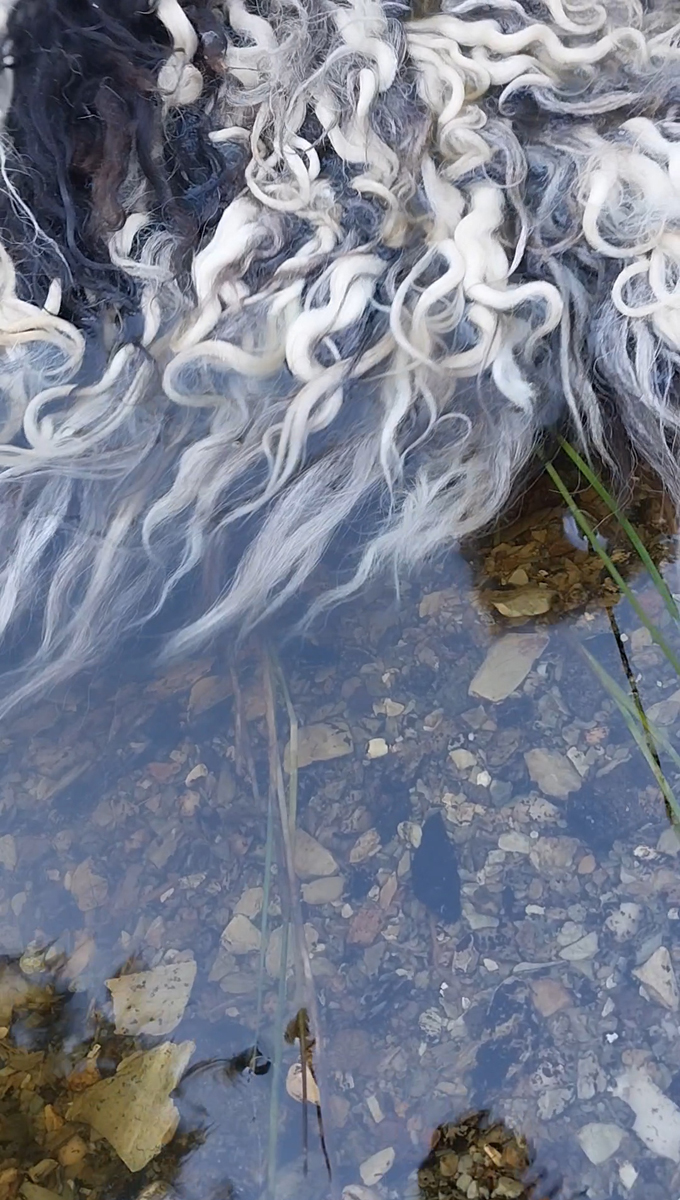
Sagas Still to Come
While my daughter-in-law was delighted by her very own hand-woven Icelandic King’s-cloak, it wasn’t long after gifting it that I realised I wanted to make more, reintroducing the varafeldur’s rich history to modern crafters and consumers. Not only does a varafeldur make a very striking cloak for any would-be Viking warriors, but it also serves as a warm and striking throw for the end of a bed, or a stunningly wild wall hanging.
My next varafeldur project will use a more traditional colour scheme of grey fleeces, as an homage to the eponymous Harald Grey-Cloak. I would particularly like to use Shetland fleeces for this project, evoking the isle’s complex Hiberno-Norse heritage. In the longer term, I have designs in mind for a traditional warp weighted loom, based on historical looms from Iceland and Norway. This would be the next step in creating a truly authentic Viking weaving experience!
As well as my ongoing varafeldur project, I am throwing myself back into making all-natural rugs from Scottish wool. I source my fleeces for these from the wonderful Colonsay Wool Growers, who raise wool sheep sustainably on their picturesque island farm. The Ashford E-Spinner Super Jumbo is invaluable for this work, allowing me to quickly spin up thick, chunky rug wool from raw fleeces that is a delight to dig the toes into. I sell my rugs via Colonsay’s Seapink Gallery, bringing it back full circle to where the wool was grown. It’s always a joy to work with like-minded crafters and farmers who take pride in their link with the landscape. I also take custom commissions via my website.
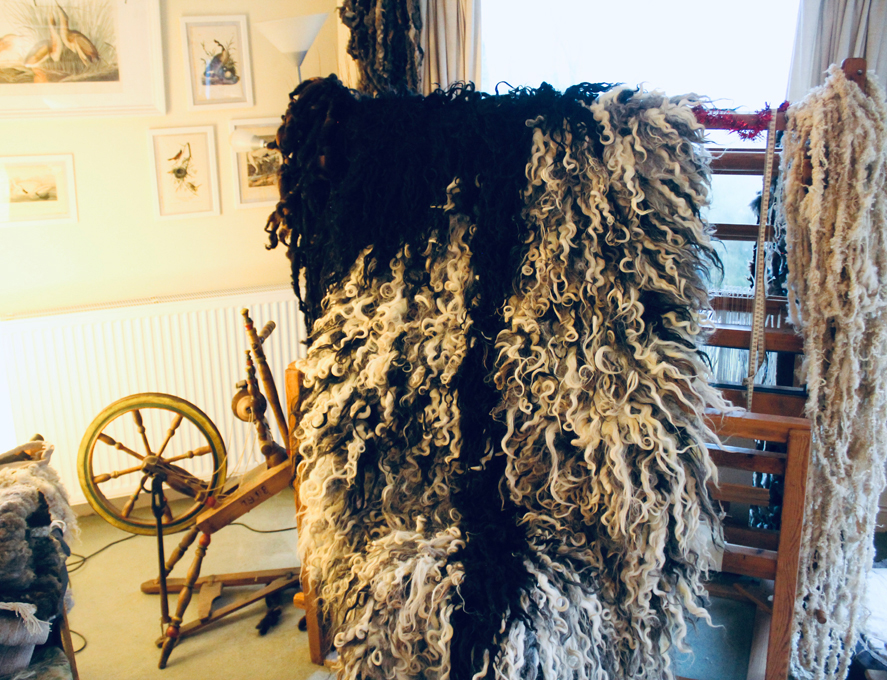
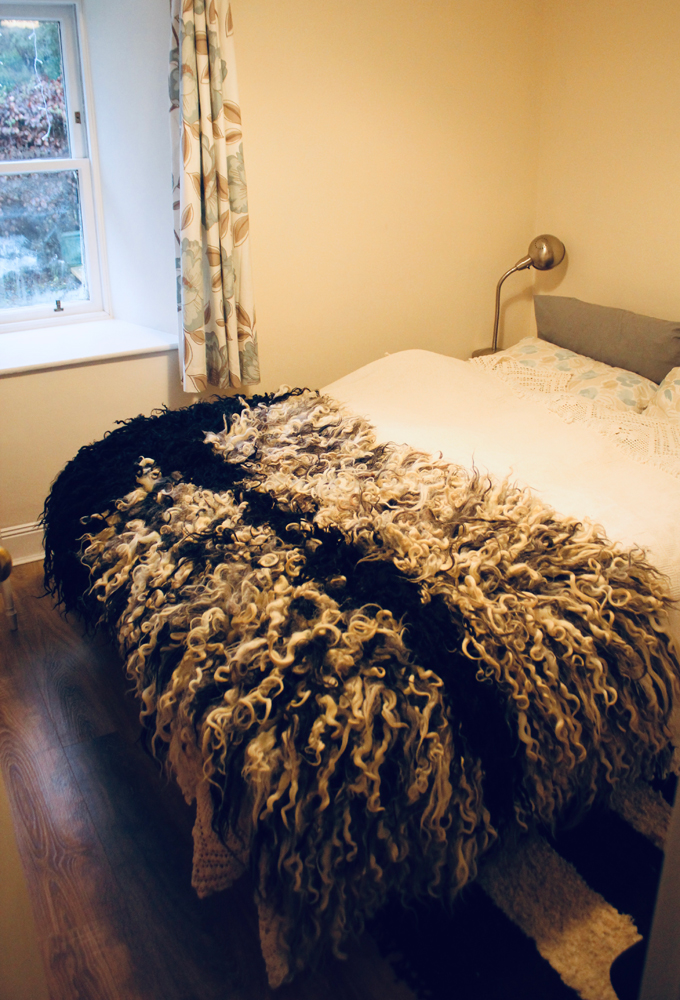
Touching History
Perhaps my biggest takeaway from weaving a varafeldur was the connection that weaving creates with crafters long-past. Knotting the long locks into the warp and the weft, I felt like I was immersed in an intricate dance with the past, repeating the same meditative movements as Viking wives on Icelandic farmsteads of centuries past. Wrapping myself in the finished garment, I feel enveloped by the sagas themselves.
Weaving for me is not just an art form, but a tangible dialogue with the environment and history that surrounds my cosy South Highland cottage. As I continue my journey into the world of sustainable woollen textiles, I am reminded that each creation is a continuation of a story that began centuries ago – and one which I am honoured to contribute to and pass on to future generations.
Sarah Rosenthal-Almirall
Ardbeag Crafts
Written by Sarah’s daughter-in-law Alicia Anne Adams


